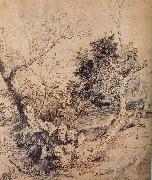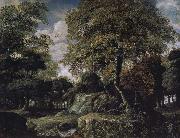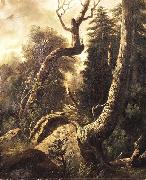Wholesale Oil Painting Reproductions No Minimum and Door to Door! |
|||||||||||
|
|
|||||||||||

|
|||||||||||
|
|
|
||||||||
All Peter Paul Rubens Oil Paintings |
||||||||
|
|
||||||||
|
|
||||||||
|
Artist Introduction: Flemish Baroque Era Painter, 1577-1640
Peter Paul Rubens (June 28, 1577 ?C May 30, 1640) was a prolific seventeenth-century Flemish Baroque painter, and a proponent of an exuberant Baroque style that emphasized movement, color, and sensuality. He is well-known for his Counter-Reformation altarpieces, portraits, landscapes, and history paintings of mythological and allegorical subjects.
In addition to running a large studio in Antwerp which produced paintings popular with nobility and art collectors throughout Europe, Rubens was a classically-educated humanist scholar, art collector, and diplomat who was knighted by both Philip IV, king of Spain, and Charles I, king of England.
Rubens was a prolific artist. His commissioned works were mostly religious subjects, "history" paintings, which included mythological subjects, and hunt scenes. He painted portraits, especially of friends, and self-portraits, and in later life painted several landscapes. Rubens designed tapestries and prints, as well as his own house. He also oversaw the ephemeral decorations of the Joyous Entry into Antwerp by the Cardinal-Infante Ferdinand in 1635.
His drawings are mostly extremely forceful but not detailed; he also made great use of oil sketches as preparatory studies. He was one of the last major artists to make consistent use of wooden panels as a support medium, even for very large works, but he used canvas as well, especially when the work needed to be sent a long distance. For altarpieces he sometimes painted on slate to reduce reflection problems.
His fondness of painting full-figured women gave rise to the terms 'Rubensian' or 'Rubenesque' for plus-sized women. The term 'Rubensiaans' is also commonly used in Dutch to denote such women. |
||||||||
|
|
||||||||
|
Forest landscape Painting ID:: 53032 |
mk225
1618
58.2x48.9cm
|
|||||||
Height Width |
INS/CM Quality |
|||||||
|
X |
| |||||||
|
|
||||||||
All Jan van der Heyden Oil Paintings |
||||||||
|
|
||||||||
|
|
||||||||
|
Artist Introduction: 1637-1712
Dutch
Jan Van Der Heyden Gallery
Van der Heyden grew up in Gorcum, but the family moved to Amsterdam around 1650. They lived on Dam Square. As a young guy he witnessed the fire in the old townhall which made a deep impression on him. He later would describe or draw 80 fires in almost any neighborhood of Amsterdam. When he married in 1661 the family was living on Herengracht, the most fashionable canal in Amsterdam. In 1668 Cosimo II de' Medici bought one of his paintings, a view of the townhall with a manipulated perspective. Van der Heyden often painted country estates, like Goudestein, owned by Joan Huydecoper II. He was not good in drawing figures and used for his paintings a metal plate for bricks, a sponge or moss for the leaves. Johannes Lingelbach, Adriaen van de Velde und Eglon van der Neer assisted him drawing the figures. Jan van der Heyden also introduced the lamp post and in 1672 impoved the design of the fire engine. He died in wealth as the superintendent of the lighting and director of the (voluntary) firemen's guild at Amsterdam.
Van der Heyden was a contemporary of the landscape painters Hobbema and Jacob van Ruisdael, with the advantage, which they lacked, of a certain professional versatility; for, whilst they painted admirable pictures and starved, he varied the practice of art with the study of mechanics. Until 1672 he painted in partnership with Adriaen van de Velde. After Adrian's death, and probably because of the loss which that event entailed upon him, he accepted the offices to which allusion has just been made. At no period of artistic activity had the system of division of labour been more fully or more constantly applied to art than it was in Holland towards the close of the 17th century.
Van der Heyden, who was perfect as an architectural draughtsman insofar as he painted the outside of buildings and thoroughly mastered linear perspective, seldom turned his hand to the delineation of anything but brick houses and churches in streets and squares, or rows along canals, or "moated granges," common in his native country.
He was a travelled man, had seen The Hague, Ghent and Brussels, and had ascended the Rhine past Xanten to Cologne, where he copied over and over again the tower and crane of the great cathedral. But he cared nothing for hill or vale, or stream or wood. He could reproduce the rows of bricks in a square of Dutch houses sparkling in the sun, or stunted trees and lines of dwellings varied by steeples, all in light or thrown into passing shadow by moving cloud.
He had the art of painting microscopically without loss of breadth or keeping. But he could draw neither man nor beast, nor ships nor carts; and this was his disadvantage. His good genius under these circumstances was Adrian van der Velde, who enlivened his compositions with spirited figures; and the joint labour of both is a delicate, minute, transparent work, radiant with glow and atmosphere. |
||||||||
|
|
||||||||
|
|
Forest landscape Painting ID:: 62083 |
mk278 34 x 42.5cm |
||||||
Height Width |
INS/CM Quality |
|||||||
|
X |
| |||||||
|
|
||||||||
All skagen museum Oil Paintings |
||||||||
|
|
||||||||
|
|
||||||||
|
Artist Introduction: |
||||||||
|
|
||||||||
|
|
Forest Landscape Painting ID:: 72771 |
Date between 1850(1850) and 1859(1859)
Medium Oil on canvas
Dimensions 55.8 X 45.9 cm (21.97 X 18.07 in)
cyf |
||||||
Height Width |
INS/CM Quality |
|||||||
|
X |
| |||||||
|
|
||||||||
|
Prev Next
|
||||||||
|
|
||||||||
|
Related Paintings to skagen museum :. |
||||||||
|
|
||||||||
|
CONTACT US |



